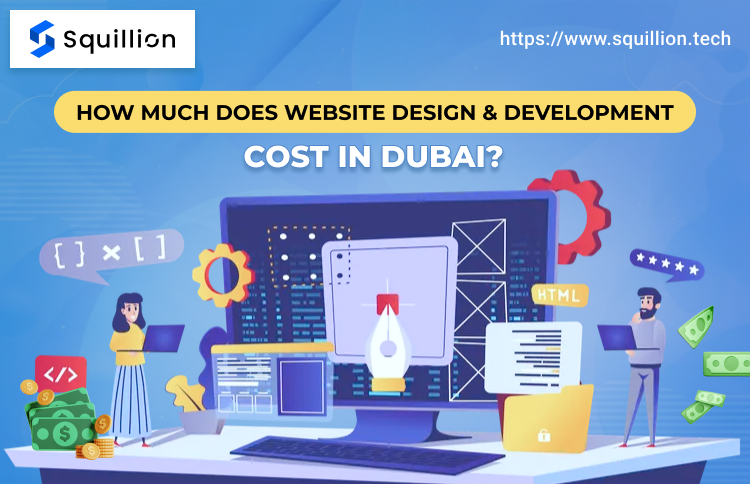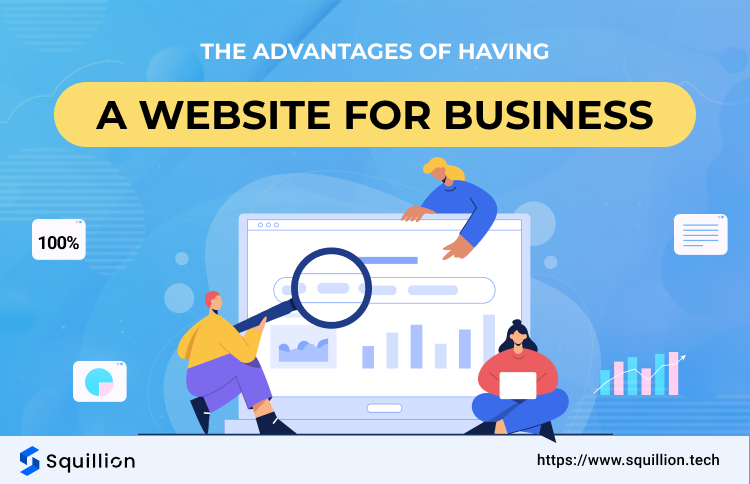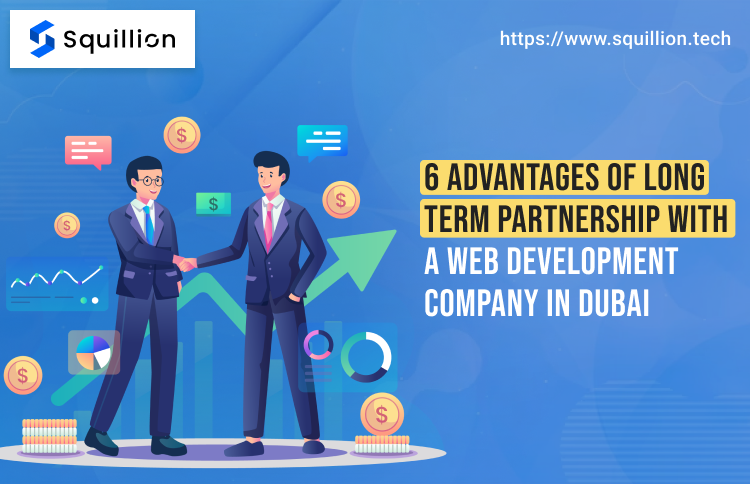Diving into website design and development can be tricky, especially when it comes to budgeting.
It’s a common concern, and without clear information, there’s a risk of either overspending or not investing enough in website development costs in Dubai.
It’s similar to planning a vacation, where you decide between a cozy budget stay and a luxurious resort. Each choice fits different needs and budgets.
Website design prices in Dubai vary just as widely, from simple, cost-effective designs to elaborate, feature-rich developments.
This blog is your guide through the maze of web design pricing. So, stay with us! By the end of this guide, you’ll have a clear picture of what to expect and how to invest smartly in your website’s future. Let’s get started and bring clarity to your web development journey.
Estimating Website Design and Development Costs in Dubai
Understanding the cost implications is crucial when planning for a website in Dubai. The investment varies based on the type of website you need. Here’s a simplified table to give you a clearer idea of what to expect in terms of pricing, features, and timelines for website design costs in Dubai:
| Website Category | Estimated Cost Range | Features | Typical Page Count | Expected Timeline |
| Starter Website | AED 2,500 – AED 5,000 ($680 – $1,360) | Basic design, essential features | 5 – 20 | 2 to 4 Weeks |
| Professional Business Site | AED 5,000 – AED 10,000 ($1,360 – $2,720) | Enhanced functionality, CMS, basic SEO | 20 – 50 | 1 to 2 Months |
| Advanced E-commerce Site | AED 10,000 – AED 20,000 ($2,720 – $5,440) | Comprehensive e-commerce features, shopping cart, and payment systems
|
50 – 150 | 2 to 4 Months |
| Custom Corporate Website | AED 15,000 – AED 40,000 ($4,080 – $10,890) | Custom design, advanced functionalities, corporate integrations | 100+ | 3 to 6 Months |
Additional Considerations
- Marketing-Driven Sites: If your primary goal is marketing or lead generation, investing between AED 7,000 and AED 15,000 can provide you with a site optimized for user engagement and conversions.
- Comprehensive E-commerce Solutions: For extensive e-commerce needs, the investment can range from AED 12,000 to AED 40,000, reflecting the complexity of large inventory systems and customer management tools.
- Content Creation and SEO: Adding professional content creation and SEO services can increase your budget by AED 1,500 to AED 5,000, which is essential for enhancing online visibility and engagement.
Note:- Each website category comes with its own set of features and functionalities, which are reflected in the pricing. Remember, these are estimates to give you a starting point for budgeting. The absolute cost will depend on your specific requirements and your chosen web development partner.
10 Key Factors That Impact Website Design and Development Costs in Dubai
In Dubai’s dynamic digital landscape, the cost of website design and development is influenced by various factors. Understanding these can help you navigate your budgeting process more effectively. Here are the key elements that typically impact the web design cost in Dubai:
1. Complexity and Customization
The more complex your website, the higher the cost. Custom features like interactive elements, specialized e-commerce functionalities, and unique design elements require additional development time and expertise.
2. Design Aesthetics and User Experience (UX)
A website with a custom, high-end design and a focus on user experience will cost more than a site using a basic template. The effort into UX design, graphics, and layout significantly influences the price.
3. Content Management System (CMS)
The choice of CMS (e.g., WordPress, Joomla, Drupal) can impact the cost. Custom CMS solutions or extensive modifications to existing platforms can increase the budget.
4. Responsive and Mobile-Friendly Design
With a growing number of mobile devices, it is vital to have a design adaptable to numerous screen sizes. This feature can add to the development cost.
5. SEO and Content Strategy
Integrating SEO from the start and developing a content strategy involves additional planning and expertise, which can influence the overall cost.
6. E-commerce Functionality
For websites that require e-commerce capabilities, aspects like shopping cart integration, payment processing, security features, and inventory management are critical and add to the cost.
7. Third-Party Integrations
Integrating third-party services or APIs (like social media feeds, CRM systems, or marketing tools) requires additional development work.
8. Website Maintenance and Support
Ongoing maintenance, upgrades, and support are critical for a website’s long-term performance and can add to the overall cost.
9. Development Team’s Expertise
The skill level and experience of the development team or agency you choose will also affect the cost. Expert teams may charge more but can deliver higher quality and more efficient work.
10. Project Timeline
Tight timelines might result in greater expenses since more resources are required to reach the deadline.
5 Factors You Should Consider When Evaluating Cost
When assessing your website design and development costs in Dubai, it’s important to consider aspects beyond the direct factors impacting the project’s price. Here are five key considerations to keep in mind:
1. Future Expansion and Upgradability
Think about your website’s potential for future growth. Will it be effortless to add new features or content? Planning for upgradability can save you significant costs and hassle in the long run.
2. SEO Compatibility and Trends
Your website’s design and development should align with current SEO best practices and trends. A site optimized for search engines from the start will perform better in visibility and user attraction, impacting its long-term success.
3. Integration with Business Operations
Evaluate how the website will integrate with your existing business operations and systems. Seamless integration can improve efficiency and user experience, impacting the overall success of your online presence.
4. Legal Compliance and Security Standards
Ensure your website conforms to local rules and regulations, particularly data protection and privacy. Adhering to these benchmarks is critical for avoiding legal concerns and increasing consumer trust.
5. Post-launch Analytics and Optimization
Consider the tools and services you’ll need for monitoring your website’s performance post-launch. Investing in analytics and optimization tools can provide insights for continuous improvement and better ROI.
Ideal Website Design and Development Packages in Dubai
Choosing the right package for website design and development in Dubai requires balancing your budget with your business needs. Remember, a website is not just an expense; it’s an investment in your brand’s digital future.
At Squillion Tech, we offer tailored web development services that cater to your unique requirements, ensuring you get the best value for your investment.
Contact us today to embark on a journey that transforms your digital presence in Dubai’s competitive landscape.
Frequently Asked Questions
What is the average timeline for developing a website in Dubai?
The timeline for website development in Dubai varies based on the project’s complexity. A basic website might take 2 to 4 weeks, while more complex sites, such as e-commerce platforms, can take 2 to 4 months.
Can I get a good-quality website in Dubai with a limited budget?
Absolutely! Opting for low-cost website design Dubai options doesn’t mean compromising on quality. Many web development companies offer affordable packages tailored to small businesses and startups, focusing on essential features and functionality.
How much of the budget should I set aside for continuous website maintenance?
Ongoing maintenance costs can vary, but allocating around 10-20% of your initial development cost annually for updates, security, and content management is wise.
Is it necessary to have a mobile-responsive design for my website?
Yes, with the increasing use of smartphones, having a mobile-responsive website is crucial. It ensures a good user experience across all devices and also benefits SEO.
What are the key features to include in an e-commerce website?
Key features for an e-commerce website include a user-friendly shopping cart, secure payment gateways, product catalogs, and customer management tools. Additionally, integrating SEO and mobile responsiveness is essential for better reach and usability.





